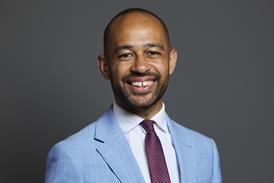Property investment makes good commercial sense. However, says David Furst, partners need to ensure that they find the right ownership structure and avoid the potential pitfalls
The ownership of property, particularly prime office buildings, has been an excellent investment over the years and is likely to continue to be so in the future.
'A Day' on 6 April 2006 heralded a major shake-up of UK pensions, and with it the opportunity for partners to make significant contributions into pension funds, particularly self-invested personal pensions (SIPPs). This focused minds on the underlying investment of funds with a particular focus on commercial property.
Prices for prime property have increased around the UK and many predict that this trend will continue. As a result, some law firms are considering opportunities to buy freehold premises from which they operate, either through the practice or through pension arrangements.
Why would firms consider paying rent on premises when this is comparable to the cost of purchasing their office? Over a period of time property owners should benefit from capital appreciation and rent reviews will no longer apply. Property ownership seems to be the obvious route, but partnerships should think carefully about all of the implications before they rush out and buy.
Potential complications can arise where a partnership or LLP owns its own premises. If the property is held in a profit-sharing ratio by a number of partners, a revaluation is required each time a partner joins or leaves or there is a change in profit-sharing ratios. In most firms this is going to be at least an annual event.
Professional valuations must be obtained and complex capital gains tax calculations made on each profit-sharing change for every partner, since disposals for capital gains tax will have taken place. In reality, the tax payable may not be significant if the disposal is business property, and annual exemptions are available, but it is a complex process.
To avoid such complications, a firm could hold the property for the benefit of the partners for a period of, say, ten years. There would be no revaluations during that time and outgoing partners would not receive any uplift for appreciation when they leave. After ten years, the property would be revalued and effectively refinanced by the ongoing partners. If the property has increased in value over the ten-year period, additional capital or borrowings may be required for the refinancing.
Anyone who was a partner at any time during the ten-year period would share the capital appreciation according to their profit-sharing percentages. This method avoids the need for external valuations each time there is a partnership change and will smooth the appreciation over the ten-year period, rather than reflect short-term changes in the property market.
However, retiring partners will crystallise a disposal at the date of leaving, even though their 'profit' may be received several years later and the amount of profit can only be estimated at the date of leaving. Care and judgement must be exercised to enable any gain to be assessed as a business asset, since at the end of the ten-year period it will not qualify as such for departed partners.
A third and less complex alternative is for each partner individually to have an interest in the property, either personally or through an individual or group SIPP. The firm would pay rent on a commercial basis to the owners just as they would to a third-party landlord.
Though this works well in the early days when the business and the property-owning partners remain the same, complexities can arise if, after a period, some of the property owners retire or join a rival firm. If a property-owning partner is required to sell when he leaves, then a buyer must be found and this may lead to complications if there are too many or too few prospective purchasers.
Other ongoing issues include periodic rent reviews, which must take place on an arms length basis. Conflicts can arise if there is a desire by either grouping to refurbish or extend the property.
Perhaps the biggest conflict issue is the decision whether to exercise a break clause in the lease. The business partners will wish to ensure the continuing suitability of the premises for the partnership business. The property partners may be reluctant to lose a tenant even if the premises are relatively easily re-lettable. Inevitably, there are costs including inducements on a change of tenant and the property may no longer be prime. Secondary or tertiary property can be difficult to let. Locations rise and fall in their desirability.
Furthermore, it is inevitable that different partners will be at differing stages of life and have different financial needs, depending on their personal circumstances. So it may well be impossible to have an investment strategy that is constantly suitable for everyone.
In addition, potential problems may emerge if the property-owning partners want an exit, particularly if they have had a rewarding investment which other equity partners have not participated in.
If there is a desire to sell the freehold because the property-owning partners wish to realise their investments and draw pensions, it may be necessary to provide a stronger covenant in the form of a longer lease to make the freehold attractive to potential purchasers. This can lead to renegotiation between the different interest groups and often acrimony.
Commercial property is a good investment, but it is wise for partners to make such investments personally or individually through their own pension arrangements.
Office premises are by no means the only good property investment around. There are plenty of other opportunities and facilities to invest on a collective basis without confusing the needs of a professional business with a property investment.
David Furst is chairman and head of professional practices at accountants Horwath Clark Whitehill
Charity Explorer provides a reputable reference tool for solicitors, will-writers and their clients who want to leave a legacy or charitable gift.
Visit Charity Explorer
Whether you are looking for legal expert witnesses, legal training/CPD providers, international law firms, administration of estates, legal software suppliers, barristers chambers or any other general legal service, the Legal Services Directory will provide a suitable option.
Visit Legal Services Directory

























No comments yet